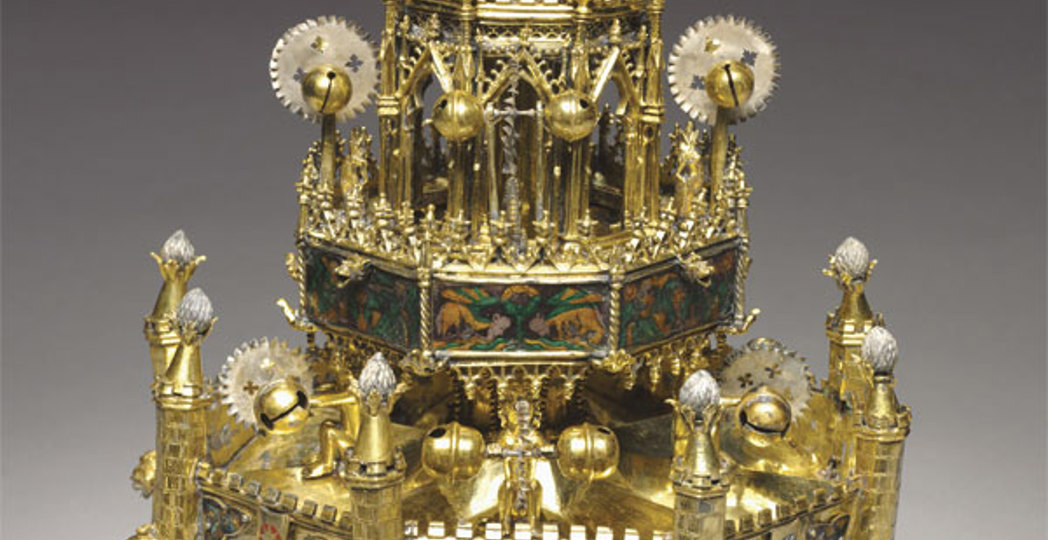A Wish Come True: The Cleveland Museum of Art Exhibits a Rare Fountain
by Roxanna Coldiron | Oct. 7, 2016 | 1:00 PM

Cleveland Museum of Art puts a rare Gothic table fountain at the center of a new exhibit.
After more than 100 years, Jeptha Homer Wade II’s contributions to the Cleveland Museum of Art still glitter like rare artifacts. One of four men who founded the institution and who donated the land where it sits, Wade spent years traveling Europe and Asia and donated more than 2,300 items, including major paintings, textiles and decorative art to the museum.
In 1924, Wade funded the acquisition of a precious 14th-century Gothic table fountain that then-museum director William Milliken discovered in a Paris art market. Made of gilt silver and embellished with colorful translucent enamel, the ornate piece is adorned with miniature Gothic parapets, arcades, vaults, pinnacles, columns and arches. While artistically beautiful, it is a technical marvel as well: Water would’ve been pumped through it, moving pieces and ringing bells.
“We have the only fully intact and functional Gothic fountain left in existence,” says Stephen N. Fliegel, co-curator of the exhibit and the curator of medieval art. It serves as the centerpiece for Myth and Mystique: Cleveland’s Gothic Table Fountain, which explores the piece’s history, function and artistry. “It was very expensive to produce and extreme care has been taken with its detail,” Fliegel says.
Placed at the center of the Julia and Larry Pollock Focus Gallery, the fountain will be surrounded by silver pieces, hand-washing vessels, enamels, illuminated manuscripts and a small panel painting by the medieval artist Jan van Eyck. “From our research, we’ve learned that calling it a table fountain is a bit of a misnomer,” Fliegel says. “It more likely stood on a pedestal in large vestibules of the owner’s estate.”
The van Eyck painting, for example, shows a mother and child standing in a garden near a fountain fed by gushing water through an underground pipe. Meanwhile an illustration in the Grandes Chroniques de France manuscript reveals a bustling banquet with no sign of a fountain.
“The manuscript seems to prove that the fountains did not in fact decorate banquet tables as previously thought,” he says. “This piece was more than likely commissioned by a monarch. It was a status symbol, a signifier of the owner’s wealth.”
Oct. 9-Feb. 26, Cleveland Museum of Art, clevelandart.org
Trending
-
1
-
2
-
3
-
4
-
5










